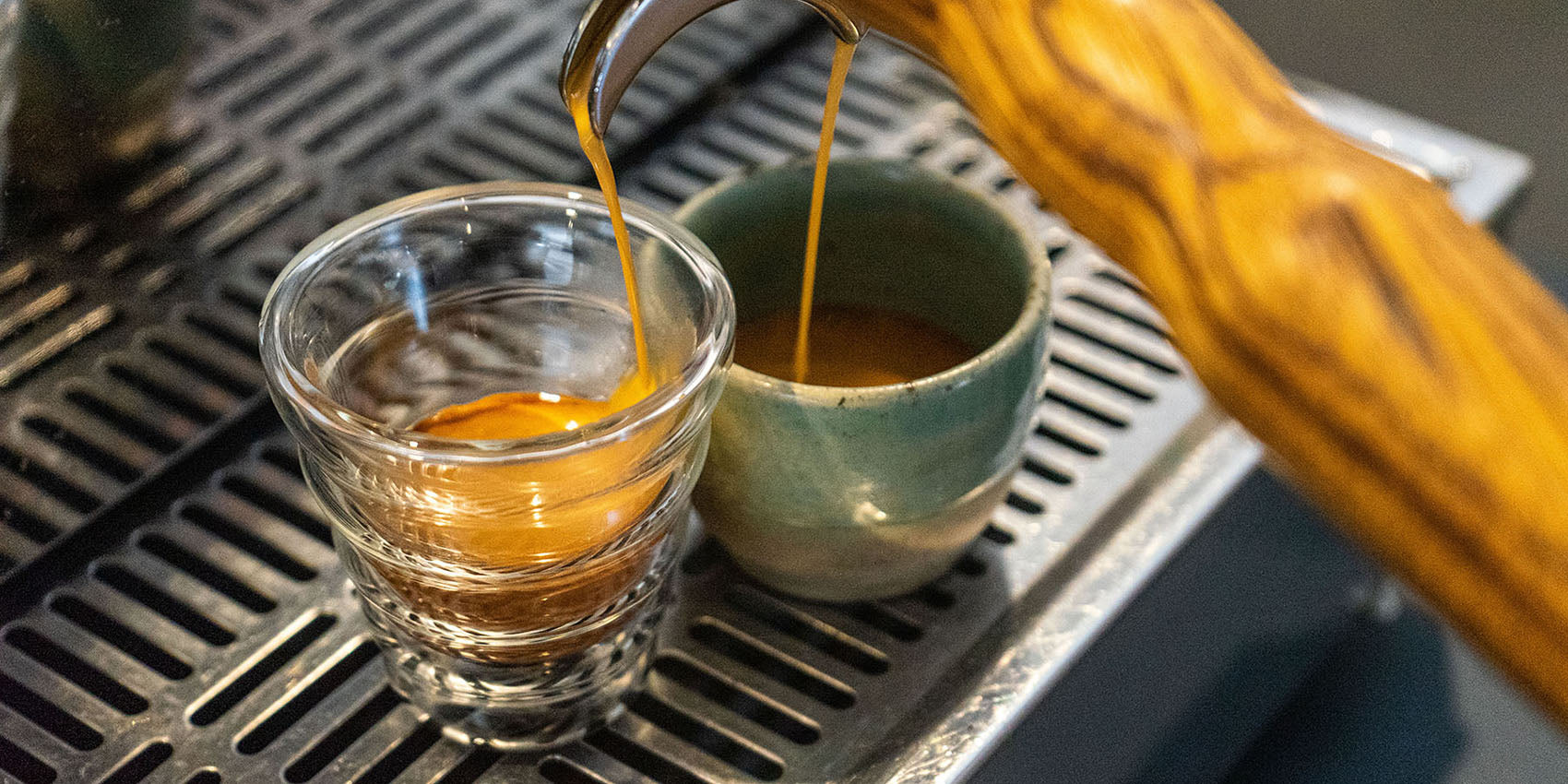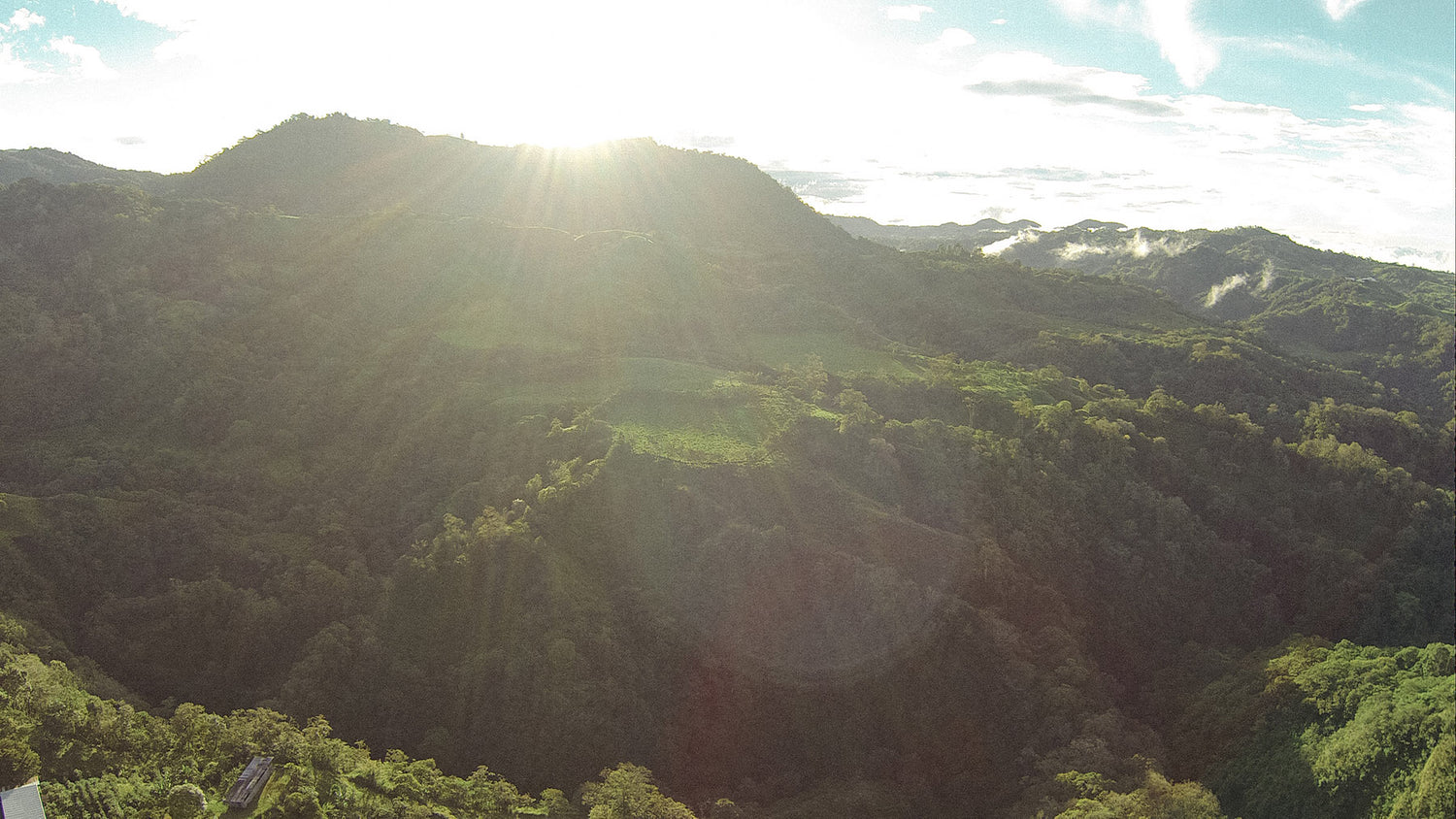First, cooking a nice coffee. No, coffee is brewed. That basically just means that 100 degrees Celsius is not suitable for coffee. We prefer to stay under 100 degrees. And what is the right brewing temperature for espresso? That cannot be answered in one sentence, but it is around 93 degrees Celsius. And now we will explain the whole temperature topic to you in detail so that you understand how your coffee behaves, how you can measure the temperature and why boiling water is not necessarily good.
The right brewing temperature for espresso – basics
There are only certain temperature ranges that are suitable for extracting aromas from coffee powder. Firstly, cold water for cold brew and then almost boiling water. This always depends a little on how much temperature the beans have already been exposed to during roasting. The more they have been exposed to during roasting, the lower the brewing temperature can basically be - always within the recommended range, of course. Between 89 and 95 degrees Celsius, you can basically do almost nothing wrong. Of course, there are fine gradations, which we will explain to you.

The right brewing temperature for espresso – light vs. dark
Espresso roasts are usually roasted quite dark, which is why you don't necessarily have to go to the upper limit of the temperature range when making espresso. You can also prepare a good dark roast at 89 degrees. If, on the other hand, you make an espresso from a light roast that was made at a lower temperature overall, you can go a few degrees higher, to 95 or even 96 degrees. It also makes a difference how the coffee was prepared: naturally prepared coffees that dry with the cherry later have more sugar on and in them than, for example, washed coffees that have the cherry removed early in the process. And this sugar can then burn during brewing and taste bitter if the temperature is too high. A washed coffee can therefore also be brewed hotter than a natural one.
The right brewing temperature for espresso – the temperature range
As mentioned above, you can hardly go wrong between 89 and 95 degrees Celsius. In this range, you will always get a good espresso. Some in the middle of the range, some higher, and some lower. You will definitely taste differences, especially if you brew the same bean at different temperatures. Here's what generally happens with coffee as the temperature rises or falls. The "colder" you brew, the more acid gets into your coffee. This can go so far that it's simply undrinkable. The hotter you extract your espresso, the more roasted aromas get into the cup. And this can go so far that the espresso becomes too strong and too bitter.
The right brewing temperature for espresso – measurement
Getting the brewing temperature right isn't a big problem these days. If you make espresso in a portafilter, you can probably set the temperature on your machine. Depending on the type of machine, thermoblock or boiler, this temperature is more or less stable. You can also use a thermometer (not a clinical thermometer, a cooking thermometer) to measure the temperature of the espresso that has come out. Then you can see how consistent and how high the temperature is. If you make "espresso" in a stovetop pot, on the other hand, you can't really control it well anyway. It's recommended to use medium heat and take the pot off the heat before the water has completely risen.
The right brewing temperature for espresso – physics, good to know
The boiling point of water is 100 degrees Celsius, but it also depends on the altitude at which you bring water to a boil. The rule of thumb is that the boiling point decreases by 0.5 degrees for every 100 meters of altitude. In Hamburg, which is 6 meters above sea level, water bubbles at 100 degrees. Munich, which is already 500 meters above sea level, has a boiling point of 97.5 degrees Celsius. And on the Zugspitze, at almost 3,000 meters above sea level, water boils at 85 degrees. This is something to keep in mind if you don't have a thermometer with you. So if you make an "espresso" from the Bialetti while you're on the Zugspitze, it will taste different than at home.
The right brewing temperature for espresso – temperature curve
You can't do that with every portafilter machine, but there are some on the market that allow you to set an extraction temperature curve. For example, you can do that with the Heylo portafilter machine . Then it makes sense to extract your espresso with a temperature curve similar to a bell curve. So start at one point, e.g. 93 degrees, and then increase slightly, before dropping sharply. As an example, we had the following setting with the Heylo and our Wilderer espresso : start at 93 degrees and slowly increase to 95 degrees and then a sharp drop to 88 degrees. This is due to the three extraction phases. At the beginning you extract acidity, then sweetness and then bitterness. Each phase lasts around ten seconds with an espresso.
Remember: you have to develop a separate curve for each coffee you use, as not all coffees react the same.
The right brewing temperature for espresso – what is the brewing temperature

When brewing coffee, we - or our machines - use hot water. It has been like this since the beginning of coffee. The best temperature for which coffee, which roast, which method of preparation has evolved over time. It is not enough to simply pour boiling water onto coffee powder. You can see this in the same way as tea. Not all tea is brewed at the same temperature. Black tea, for example, needs around 95 degrees, while green and white teas should be brewed at 70 to 80 degrees Celsius. The temperature is therefore a variable when brewing coffee, and it changes depending on the choice of coffee and the method of preparation. But conversely, it also influences the method of preparation and the choice of coffee.
The right brewing temperature for espresso – not too high, not too low
What you should avoid is going much below 89 or much above 95 degrees - at least not if you want your coffee to taste good. At more than 95/96 degrees, the essential oils and aromas in the beans burn. Then the aftertaste doesn't last as long and you miss out on the aromas that you've boiled out of the coffee. Unfortunately, this still happens far too often these days, and I don't want to embarrass anyone, but most of the time you burn your tongue on gas station espresso. It's brewed too hot. (Gas station coffee is also dangerous for your mouth, by the way.) The further you go below 85 degrees, the weaker and more acidic your espresso will taste - and you don't want that.
The right brewing temperature for espresso – table overview
Here is a small table with an overview of all preparation methods, including the recommended temperature. These are usually temperature ranges, as every bean and machine behaves differently and your personal taste also plays a big role.
| Preparation method | temperature |
| Portafilter |
93 °C (light roast slightly more, dark roast slightly less) |
| Stovetop pot | medium heat |
| Fully automatic |
normal or medium (or high for light roast) |
| Hand filter | 89 to 94 °C (depending on roasting) |
| Chemex | 89 to 94 °C (depending on roasting) |
| French Press | 93 °C and higher (dark roast also at 90 °C) |
| Aeropress | 90 to 94 °C (also depending on the degree of roasting) |
The right brewing temperature for espresso – conclusion
There is a temperature range recommended by professionals within which you can always make a pretty good espresso. But not every machine works the same, not all grinders grind the same and not all beans behave the same. And on top of that, every coffee lover has their own taste. That's why the right brewing temperature for espresso is always a little experiment. You start (best) with 93 degrees Celsius and then go up or down a few degrees and see what feels best for you... or what you like best! And then the espresso will work!


